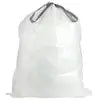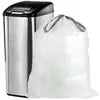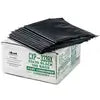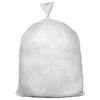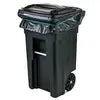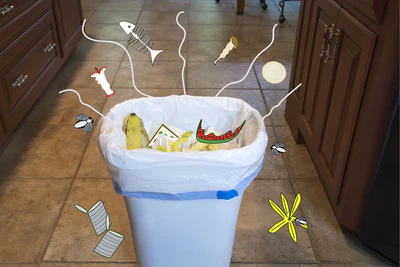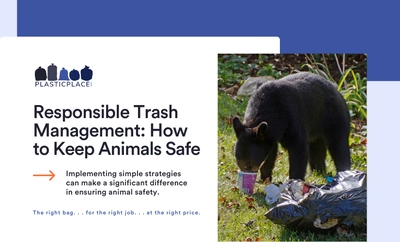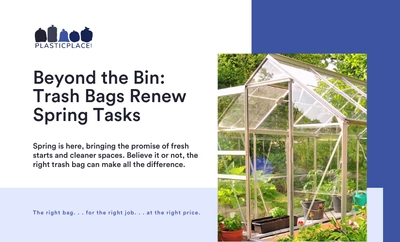For anybody who wants to reduce their carbon footprint and dispose of their waste more sustainably, composting can be an important part of the picture. However, if your image of composting is a large and fragrant compost pile in the backyard, you might rightly wonder how the one in eight Americans who live in an apartment can get in on the fun without creating a big mess for themselves and their neighbors.
Don’t let a smaller space fool you into thinking you’re stuck throwing away food instead of composting it. It’s totally possible to compost in an apartment, and many people do it successfully! In the guide ahead, we’ll give you the basics of composting in a smaller space and break down some of the most common methods that people who live in apartments use for composting.
Why Start Composting in Your Apartment?
Many people wonder if starting a compost is worth the effort for them, particularly if they live in a small, urban space. If you’re on the fence about it, check out these five reasons that composting in your apartment is both beneficial and achievable:
- Americans throw a huge amount of food waste in the garbage, and almost all of it ends up in landfills. And while that food waste does eventually break down, the lack of light and oxygen in a landfill means it produces methane in the process — a greenhouse gas many times more powerful than carbon dioxide. Composting, while it does produce some carbon dioxide, puts a lot of its carbon back into the soil instead, where it doesn’t contribute to the greenhouse effect.
- If you’re a gardener, let’s just say that there’s a reason that compost is nicknamed “black gold.” It’s a potent fertilizer for gardens and has a wide variety of other benefits, such as improving the soil’s density and pH. In fact, it’s so effective that some gardeners actually pay money for high-quality finished compost.
- Certain composting methods don’t require a large amount of space. The methods that we’ll discuss later in this piece are all suitable for smaller spaces, thanks to the efficient ways that they break down organic waste.
- Worried about the smell? Believe it or not, compost shouldn’t have any kind of strong unpleasant odor. You might notice a mild earthy smell from it, but if your compost is seriously malodorous, it’s a sign that you need to change what you’re putting into it. In addition, a well-fitting lid and charcoal filters can help minimize any smells that your compost does emit.
- Once you get them started, most apartment-friendly types of composting are relatively low-maintenance. While a compost bin does require some regular tasks like an occasional turning, it’s generally something you can do with a few minutes of work per day.

Composting Fundamentals
Before you embark on your urban composting journey, let’s look at some of the basic facts about composting in general. This will help you understand the process of composting and how you can get it started in your apartment.1. Only certain items should go in your compost.
These are the items that are good for basically any compost:- Coffee grounds and tea leaves
- Raw vegetable and fruit scraps
- Non-glossy paper and cardboard products
- Eggshells
- Most leaves, grass, twigs and other yard waste
Some items may or may not be OK, depending on where you live and whether your compost is outdoors or indoors. These include foods cooked in oil, as well as grains like bread and pasta. The main problem with these foods is that they tend to attract pests — but with proper precautions, they can be fine.
Other items should almost never be composted. Pet waste is the number one no-go since it can spread dangerous pathogens to the soil where food is grown in. Unless you have a Bokashi bin (see below), you also shouldn’t compost meat and dairy products. They attract pests, create strong odors and may overheat your compost. Finally, note that compostable trash bags are designed for commercial composting, not at-home composting, so you generally shouldn’t place them in your home compost.
2. You need the proper balance of “browns” and “greens.”
A healthy compost has the right blend of carbon (from “brown” materials) and nitrogen (from “green” materials). Browns include non-glossy paper and cardboard, dead leaves, twigs and even paper towels (so long as they’re not oily or greasy). Greens include most kitchen scraps like veggie peels and coffee grounds, as well as other nitrogen-rich substances like grass clippings.
Browns and greens feed different types of microorganisms in your compost pile, and both are necessary to keep the miniature ecosystem in your compost healthy. Too many browns, and your compost will decompose at an agonizingly slow rate. Too many greens, and an overabundance of bacteria will give you bad-smelling (and potentially overheated) compost.
You’ll find a lot of different information about the ideal ratio of each material type, but many composting experts recommend an approximately 4-to-1 mixture of browns to greens. Fortunately, this rule is generally flexible and forgiving. If your compost is too hot or not hot enough, there’s no need to start all over — simply adjusting the ratio will often get you back on track!
3. Most types of compost need the right amount of air and moisture.
Much like you do, the organisms in your compost need to breathe air to survive. In fact, lack of air can lead to foul-smelling anaerobic decomposition. Moreover, the middle of the compost pile is where most of the action of microbial decay occurs, so regular rotation and aeration are a must to ensure that things are breaking down.For people who have room to compost outdoors, this means regularly turning your compost, often using tools like a pitchfork or shovel. Although many indoor composting methods require less intensive aeration, it’s still important to pay close attention to the aeration requirements of your chosen composting system. For example, you’ll need to drill air holes in the top of a worm compost bin. (Yes, these exist, and we’ll talk about them in just a second!)
Keeping the right moisture level is also critical for just about any type of composting. A compost that’s too moist can create gross-smelling anaerobic bacteria, while one that’s too dry may not decompose at all. Mixing in dry materials like leaves or paper is good to soak up water in an overly wet compost, while a simple spritz with a spray bottle or adding more water-filled foods like veggie scraps can liven up dry compost.
Shop Our Eco-Friendly Trash Bags NowComposting Methods for Apartment Living
Several composting methods exist that will allow you to create a thriving, healthy compost in your apartment. For the purposes of this article, we’re going to assume that you don’t have a balcony or backyard where you can put your compost, although some apartment dwellers do have these. If you do, consider using a traditional outdoor compost bin too!
1. Municipal Composting Programs
Some Americans are now lucky enough to live in an area with municipal or community composting services. The State of California recently introduced a statewide composting program that asks residents to place their compost in a bin for pickup and disposal by local waste authorities. In other areas, nonprofit organizations offer composting services for the community.
Local government websites, such as your municipal sanitation or environmental authorities, will typically have this info. Even if they don’t offer compost pickup themselves, they may be able to direct you to community organizations that do. While you’re at it, make sure to look at what your local composter does and doesn’t accept. Your compost service may also ask you to use special types of bags, such as 30 gallon compostable trash bags, to make collection easier.
Municipal or community composting is great for anyone who simply wants a greener alternative for food waste disposal. However, if you want the compost for your garden, you’re better off choosing one of the following methods so you can keep your compost close to home!
2. Worm Composter
What if you started keeping a huge box of pet worms in your apartment? If you’re composting, that idea is less bizarre than it might sound! In fact, vermicomposting, or composting using earthworms, is one of the most common and convenient ways to compost in your apartment. This technique lets you create a thriving compost in an extremely compact space using the power of earthworms to break down organic matter.
Here’s the most basic version of how starting a worm composter works:

- Buy a suitable bin. A standard plastic storage tote can work, although you’ll need to make some modifications, including drilling holes for air and drainage. Many companies now also offer dedicated worm bins that provide a great environment for worms without modification. Don’t forget to add a drip pan or bed of newspaper under the bin to catch moisture runoff.
- Create a layer of worm bedding — a mixture of soil, dead leaves and shredded paper products that have been soaked in water. Add a small amount of compostable food scraps to help build up a base population of soil microbes.
- After a few days, your worm bedding will be ready for some wiggly new friends. Many different species of worms can work, but the most common choice is using red wigglers, a subspecies that is extremely good at breaking down organic matter. (Where do you get them? Believe it or not, you can buy earthworms online or at many garden stores!)
- Leave the worms alone for a few days — the food and bedding that’s already in the bin should be sufficient at first. Once the worms get comfortable, they’ll begin consuming and breaking down your compost scraps.
- Be careful to keep your worms at an appropriate temperature; most worm species thrive between approximately 60º and 80ºF. Add new layers of bedding regularly, and feed the worms a few scraps every day rather than dumping them all in at once — overfeeding can throw off your soil pH and harm your worms.
- After an average period of around six months, you’ll probably want to start harvesting composted material, using one of the several methods of harvesting worm compost. Those who aren’t afraid to get their hands dirty can manually remove the worms from the finished compost. Alternatively, you can “migrate” the worms out of the finished part by feeding them on one side of the bin or using light to encourage them to relocate.
3. Bokashi Composter
A bokashi composter or bokashi bin is another method that requires minimal space and can be ideal for apartment composting. It’s technically not composting at all — rather, it’s fermentation, using a special type of grain known as bokashi bran that has beneficial bacteria added to it.
One advantage of a bokashi bin is the huge amount of different materials you can feed it. It’s one of the few composting methods that can safely process items like meat, bones and dairy. Indoor gardeners will also love “bokashi tea,” the nutrient-rich liquid that bokashi bins produce because it makes amazing fertilizer for houseplants!
Bokashi bins also work much faster than traditional compost, often producing usable bokashi compost in a month or less. However, unlike normal compost, bokashi compost needs to be buried in your garden rather than simply added on top of the soil — or, you can add it to existing worm compost if you have any!
More Tips for Successful Composting in an Apartment
- Establish a secondary bin to hold compost scraps before adding them to your main compost. This can be anything — even a simple large black trash bag will work well! Adding too many scraps at once can throw off the balance of nutrients and cause your compost to smell bad or even kill the organisms inside.
- Chop up your scraps or otherwise break them into small pieces before adding them to the bin. This will help them decompose more quickly.
- Be careful not to compost too many scraps from highly acidic fruits such as citrus peels. They’re usually fine in small doses, but they take a long time to break down, and excessive amounts can create soil conditions that are too acidic for worms.

Image Credits:
HollyHarry/Shutterstock.com
lomiso/Shutterstock.com
Novakovav/Shutterstock.com
Jerome.Romme/Shutterstock.com
Anna Hoychuk/Shutterstock.com
Daisy Daisy/Shutterstock.com
Liara Studio/Shutterstock.com
UliAb/Shutterstock.com
Green angel/Shutterstock.com
 4.9 out of 5
4.9 out of 5 












